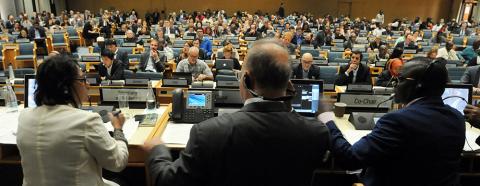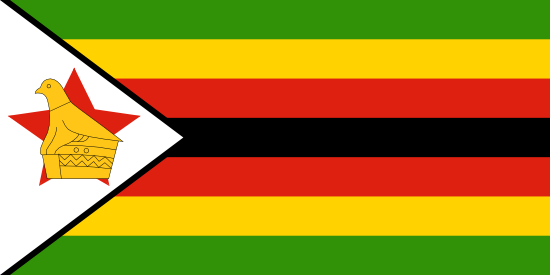The International Community makes strides in Developing the new Global Blueprint for Biodiversity
The Post 2020 Global Biodiversity Framework (GBF) is an ambitious blueprint that will guide the international community’s actions on conservation of biodiversity, sustainable use of its components and ensuring equitable sharing of benefits. It is being developed by Parties to the Convention on Biological Diversity (CBD) which was adopted in 1992 in Rio De Janeiro, Brazil. The CBD envisages a world living in harmony with nature by 2050. The GBF is the means through which that vision will be realized.
This comes at a time when biodiversity is being lost at unprecedented rates as indicated by the latest Intergovernmental Science Policy Platform on Biodiversity and Ecosystem Services global assessment report. Over 4.3 billion people, more than half the world’s population, depend on biodiversity for their livelihoods. Nearly 40% of the world's economy is derived from the direct use of biodiversity, and 70% of the world’s poor and vulnerable that live in rural areas depend directly on it. 67% of Zimbabwe’s population residing in rural areas depends on biodiversity for their livelihoods, medicinal and cultural needs. The agricultural sector, which is the backbone of the economy and the tourism sector which brings in foreign currency, are based on biodiversity.
The GBF builds on the Strategic Plan for Biodiversity 2011-2020 and Aichi Targets adopted in Japan in 2010 by parties to the CBD. Most of the Aichi targets were not met by the year 2020. However, the Fifth Global Biodiversity Outlook notes that some progress has been made towards achieving some of the targets. The Zimbabwe’s Sixth National Report to the CBD notes that the country was successful in meeting some of the National Biodiversity Targets which fed into the Aichi Targets. The country continued to effectively manage its protected areas network which covers 27.2% of total land area, while a number of globally threatened species notably the African elephant, lion, leopard and rhino also continue to receive protection resulting in either stable or increasing populations.
The Conference of Parties (COP) to the CBD which is the main decision making body of the CBD, met in 2018 in Sham El Sheik Egypt for the 14th time (COP14) and adopted a decision to set up an Open Ended Working Group (OEWG) to develop the GBF. The OEWG comprises of CBD national focal points and focal points of the Nagoya protocol and Cartagena protocol. It is Co-chaired by Francis Ogwal of Uganda and Basile van Havre of Canada. The OEWG has so far met three times to negotiate the GBF, the first time was in August 2019 in Nairobi, Kenya , the second time in February 2020 in Rome, Italy and the third meeting was held virtually 28 August -3 September 2021. The OEWG is also expected to meet physically in January 2020 in Geneva, Switzerland to finalize the text of the framework. Since the inception of the GBF development process, various thematic consultations were conducted and fed into the first draft. The 24th meeting of the Subsidiary Body on Scientific, Technical and Technological Advice (SBSTTA) and third meeting of the Subsidiary Body on Implementation (SBI) also fed into the draft. The GBF is expected to be adopted at the 15th Conference of Parties to the CBD in Kunming, China to be held from in 25 April to 8 May 2022.
The first draft of the framework was published in July 2021. The framework is built around a theory of change which recognizes that urgent policy action globally, regionally and nationally is required to transform economic, social and financial models so that the trends that have exacerbated biodiversity loss will stabilize in the next 10 years, and allow for the recovery of natural ecosystems in the following 20 years, with net improvements by 2050 to achieve the CBD’s vision of “living in harmony with nature by 2050”. It envisions a world living in harmony with nature, where by 2050 biodiversity is valued, conserved, restored and wisely used, maintaining ecosystem services, sustaining a healthy planet and delivering benefits essential for all people. It has four goals to be achieved by 2020 with ten 2030 milestones and 21 targets to be completed by 2030.

